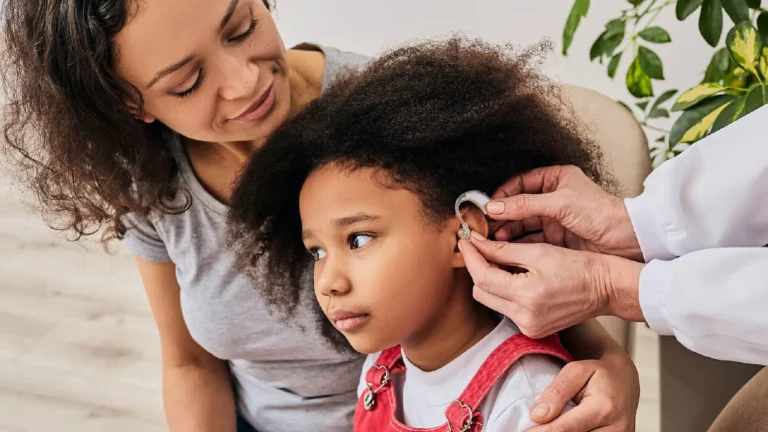Getting fitted for a hearing aid makes it easier to talk to others, understand what they say, and fit into your daily life. Since every new experience is a surprise in its own way, the first few days and weeks with your new devices may be full of questions, surprises, and getting used to things. People can feel less worried, and the shift can feel more natural if everyone knows what to expect. This can be done by giving them a heads-up.
Adjusting to New Sounds Takes Time
Hearing aids amplify environmental sounds. That first time exposes the brain to sounds it may not have processed in years. Running water, rustling papers, footsteps, and other everyday sounds may initially seem loud or harsh.
Your brain needs time to relearn how to comprehend these noises. The process takes time. The first few days may be overpowering, but repeated use adjusts the brain. This makes noises more natural and less distracting. Consistency matters. Breaks are nice, but the brain adjusts faster to consistently worn technology.
Speech May Not Sound Perfect Right Away
Speech clarity is one of the most anticipated benefits of hearing aids. Even if speech comprehension improves significantly, it may not be noticeable. Background noise can still be a concern in restaurants, family gatherings, and other public spaces.
Also, people who are new to using hearing aids may find that their own speech sounds weird or excessively loud at first. This “occlusion effect” will fade as the ears and brain adjust to the new environment. Since persistence and adjustments are needed to fine-tune these early discomforts, patience will go a long way.
Physical Comfort Is Part of the Learning Curve
Wearing something in or behind the ears can be awkward at first. Some hearing aids are completely in the canal, while others sit behind the ear with a little receiver. Either way, pressure or unfamiliarity may be felt.
If the devices are used for long hours right away, the user may experience some itching or pain in the first week or two. Start cautiously and work up to full-day wear. If any part of the device feels tight or irritable, have it adjusted by your hearing care professional, as it may be as simple as changing the dome size. Wearing the devices should become normal over time.
Background Noise and Volume May Seem Off at First
Not all noise is blocked by hearing aids. They magnify sound so the brain can distinguish speech from environmental noise. In the early stages, the brain can’t distinguish between significant and unimportant. This can make air conditioners and traffic sound louder.
Volume may also take some getting accustomed to. Louder settings are tempting, but they don’t always improve clarity. Hearing health professionals start with a comfortable setting and increase amplification as the brain adjusts. This reduces fatigue and simplifies the process.
Technology Plays a Bigger Role Than Expected
Modern hearing aids have several capabilities beyond amplification. From Bluetooth streaming to rechargeable batteries to mobile app controls, modern technology improves hearing and convenience. But it can be overwhelming to learn first.
Practice is needed to insert, remove, clean, and charge hearing aids. Learning the features helps too. These tools become useful and entertaining for those who persevere. You can take it slow, ask questions, and remember that hearing health professionals help users learn and make adjustments when needed.
Support Makes a Difference in Long-Term Success
Starting with hearing aids can feel like starting over, but you’re not alone. Support from family, friends, and hearing health professionals makes the process easier and more successful.
Check-ins and follow-ups address early issues and ensure device functionality. These visits provide the opportunity to discuss difficult situations like loud groups or phone calls. The goal is for hearing aids to eventually seem natural and boost confidence.
Hearing aids offer meaningful improvement but are not a fast fix. Eventually, small details that were bothersome begin to smooth out, and the sound becomes more balanced. Communication becomes easier, and most significantly, relationships improve.
Ready to Take the First Step?
Starting the process with hearing aids takes commitment, but the benefits can be life-changing. Those who give themselves time to adjust often find a renewed sense of ease in conversations, more enjoyment in social settings, and greater awareness of the world around them. Regular check-ins and open communication with hearing care professionals help ensure continued progress. When support and education are in place, hearing better can truly become part of everyday life again.


